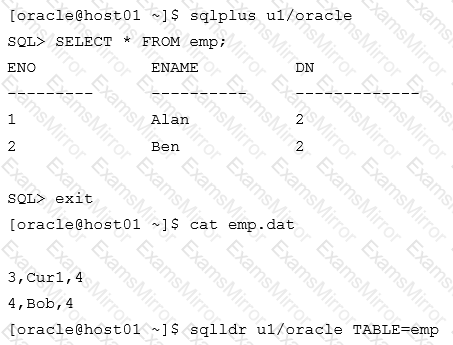Cyber Monday Special Limited Time 70% Discount Offer - Ends in 0d 00h 00m 00s - Coupon code = getmirror
Pass the Oracle Database 19c 1z0-082 Questions and answers with ExamsMirror
Exam 1z0-082 Premium Access
View all detail and faqs for the 1z0-082 exam
668 Students Passed
92% Average Score
96% Same Questions
Examine these commands:

Which two statements are true about the sqlldr execution? (Choose two.)
The customers table has a cust_last_name column of data type varchar2.
The table has two rows whose "jst_last_name values are Andersen and Ausson.
Which query produces output for cust_last_xame containing Oder for the first row and Aus for the second?
Which two actions can you perform using DBCA for an existing database?
Examine the description of the BOOKS_TRANSACTIONS table:

Examine the description of the PRODUCT_STATUS table:

The status column contains the values 'in stock' or 'out of stock' for each row.
Which two queries will execute successfully?
Which two queries execute successfully?
Which two statements are true about the DUAL table? (Choose two.)
Which two statements are true about undo and undo tablespaces?
In which three situations does a new transaction always start? (Choose three.)
Which four statements are true regarding primary and foreign key constraints and the effect they can have on table data? (Choose four.)
TOP CODES
Top selling exam codes in the certification world, popular, in demand and updated to help you pass on the first try.
